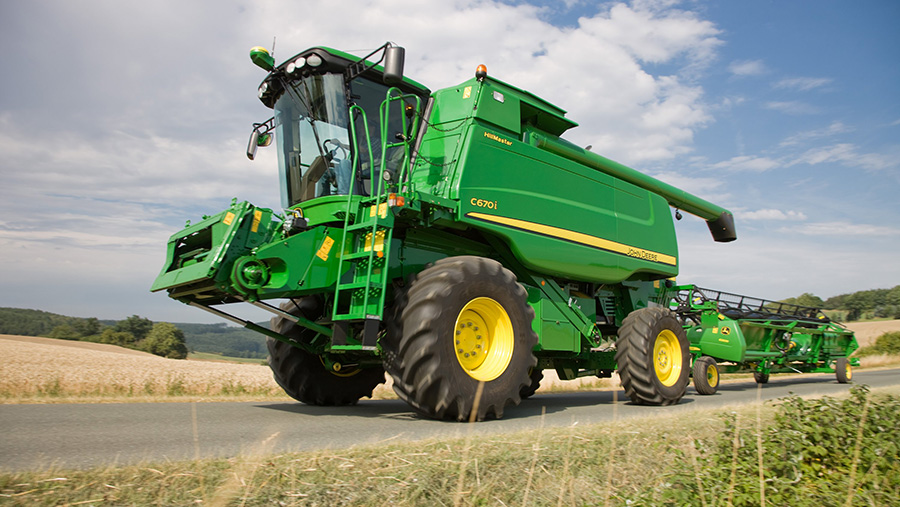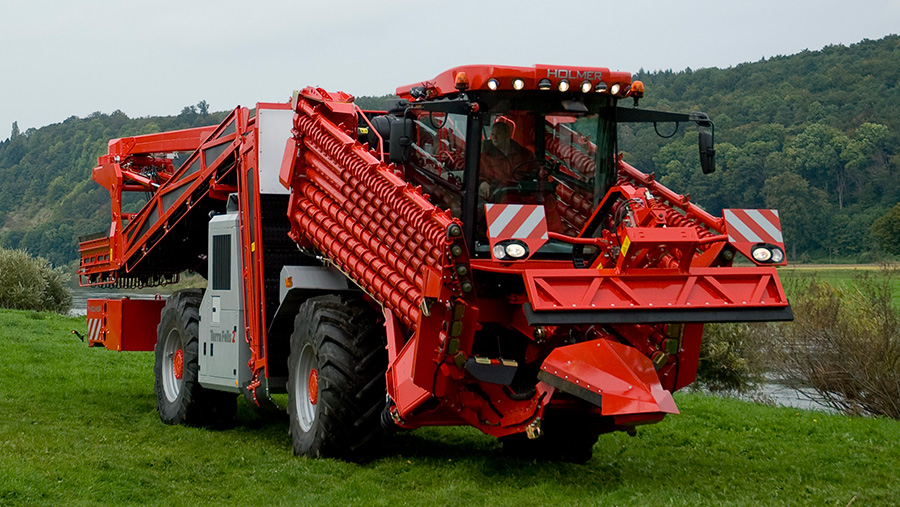Rules reminder: Stay road legal this harvest

Whether it’s harvesting grass, cereals or vegetables, extra numbers of wide machines will be heading up and down Britain’s roads. But in all the rush to get ready, don’t forget to be road-legal too.
That doesn’t just mean checking that trailer indicators are working reliably and mirrors are clean and pointing the right way; it also means remembering about the pithily titled Agricultural Vehicle Dispensation Scheme too.
See also: Tractor speed limits to rise
Mark Bryant, an agricultural specialist with Suffolk police, points out the scheme gives increased flexibility to farmers moving large or wide loads on public roads.
Vehicles up to 4.3m (14ft) wide can be moved without the need to notify police of what is technically an abnormal load movement.
But instead of having to phone up every time you want to move a combine or large tractor from one field to another, the scheme allows farmers to escort their own machines, within a 25-mile radius of their base, using a farm escort vehicle

What do you need to do? A lot of places have specific additions to these rules, so speak to your local police force, ask for the abnormal loads department and they will help you.
The certificate lasts for 12 months and covers all movements of the vehicles named by your business.
Why is this important? If you have an accident, points out PC Bryant, and it subsequently turns out the vehicle should never have been on the road in the first place, then the problems can really start to mount up. You have been warned.
Harvest rules at a glance
Speed and weight limits
In 2015 revisions were made to the weight and speed limits for agricultural vehicles.
Under the changes, the maximum combination weight limit for tractors and trailers increased from 24.39t to 31t along with a rise in the speed limit for tractors to 40kph (approximately 25mph), up from 20mph.
Although this is soon set to change again, the limits to width are the same.
Age limits
Although 16-year-olds who have passed their category-F tractor test can legally drive on the road, it is important to remember that there are limitations.
These state that you can only drive a tractor less than 2.45m wide and a trailer less than 2.45m wide with either two wheels or four close-coupled.
So no hopping on a Fendt 939 with tri-axle 24-tonner on the back.
Seventeen-year-old drivers who have passed their category-B car test are also able to drive a tractor legally on the road without having to take another test.
However, the minimum age limit for driving large tracked tractors on the road is 21 and they’ll need to take a separate test for a category-H licence.

